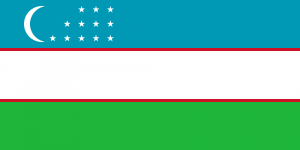Language/Northern-uzbek/Culture/Art-and-Music
Introduction
Assalomu alaykum (Hello) and welcome to the lesson "Art and Music" of the "Complete 0 to A1 Northern Uzbek Course"! In this lesson, we will explore the rich artistic and musical heritage of Northern Uzbekistan. Throughout history, the region has been home to many great artists and musicians, and their legacy has enriched Uzbek culture in countless ways.
Art and music are essential aspects of Uzbek culture, reflecting the diversity and creativity of the region. In this lesson, we will learn about traditional art forms, such as ceramics, embroidery and painting, and explore the unique sounds of Northern Uzbek music, including classical, folk and modern forms.
Ceramics and Handicrafts
Ceramics and handicrafts are an important part of Uzbek artistic heritage. For centuries, masters of ceramics in Northern Uzbekistan have created intricate works of art, combining a wide range of styles from ancient traditions to modern interpretations. Sherabad, located in Surkhandarya region, is one of the most famous centers of ceramics in Uzbekistan. During the Soviet period, the art of ceramics flourished, and the tradition has continued to this day.
Another form of handicraft popular in Northern Uzbekistan is embroidery. Embroidery is used to beautify clothing and household items, as well as to create wall hangings and other decorative items. The most popular style of embroidery in Northern Uzbekistan is Gulduzi, a style that features bold, colorful designs that are typically floral in nature. The embroidery is distinctive for its raised appearance, which is achieved by stitching over a small pad of cotton.
In addition to ceramics and embroidery, Northern Uzbekistan is also known for its handmade carpets. Uzbek carpets are famous for their unique designs and vivid colors, and they are often made using traditional techniques that have been passed down through generations of weavers.
Painting and Calligraphy
Uzbekistan has a long tradition of painting and calligraphy, which date back to ancient times. The most famous style of painting in Northern Uzbekistan is Suzani. Suzani is a form of embroidery that is used to create stunning wall hangings and tapestries. The motifs used in Suzani embroidery are inspired by nature, and they often feature flowers, vines, and other plant forms.
Calligraphy is another important art form in Uzbekistan. The region has a long tradition of producing beautiful calligraphic designs. Calligraphy is an important part of Islamic art, and many famous Uzbek calligraphers have worked with the holy Quran to create some of the most beautiful Islamic manuscripts in the world.
Music
Music is an integral part of Uzbek culture. In Northern Uzbekistan, music has diverse and rich traditions, ranging from classical to folk and modern styles. The most famous instrument in Uzbek music is the stringed instrument known as the Tar. The Tar has a long neck and two strings, and it is played with a plectrum. Other popular instruments include the Rubob, a long-necked lute, and the Doira, a large round drum.
The classical music of Northern Uzbekistan has its roots in the ancient courts and palaces of the region. Classical Uzbek music is characterized by complex rhythms, intricate melodies, and a wide range of instruments. Despite being hundreds of years old, classical Uzbek music remains popular in the region today.
Folk music is an important part of Uzbek culture, and Northern Uzbekistan has a rich tradition of this genre. Folk music in Northern Uzbekistan is characterized by its use of traditional instruments, such as the dutar, a two-stringed lute, and the chang, a type of harp. In addition to traditional instruments, folk music often features singing and dancing, which are used to tell stories and celebrate important events.
Modern music is also popular in Northern Uzbekistan, and many Uzbek musicians are becoming famous on the international stage. Modern music in Uzbekistan is diverse, ranging from pop and rock to hip-hop and electronic dance music.
Conclusion
That concludes our lesson on the rich artistic and musical heritage of Northern Uzbekistan. We hope this lesson has been informative and has given you a glimpse into the diversity and creativity of Uzbek culture. In the next lesson, "Historical Sites and Landmarks," we will discover the history and architecture of ancient cities and monuments of the region. Xayr (Goodbye)!

